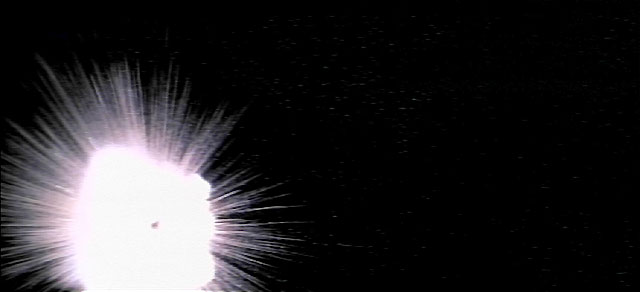Darth Wong wrote:Lucas does not talk about technological matters in his scripts.
Right. He doesn't give explanations. He mentions a few things - twin ion engines, hyperdrive, lightspeed, droids - but he never explains
how they work, and I don't think I want him to. I'd rather he hadn't done as much explaining about the Force as he did with the midichlorion thing, actually.
Actually, the first quote really says nothing at all about exactly what hypermatter is.
"Ultra dense fuel silos" - this hypermatter is dense.
"Annihilation core" - this hypermatter is annihilated.
SirNitram's statement further implied a general magnitude for the density; yes, technically that is not from the first quote.
Wrong. Acceleration of an entire planetary mass to around 5% of c simply cannot be done without an enormous quantity of energy. And Tesla never developed any magical uber-techs that could defy the laws of thermodynamics, widely Tesla-wank bullshit aside.
Acceleration of a planetary mass to 5%
c, and not relating to the Death Star - that's another thing I don't remember seeing in the movies. Yes, Tesla obeyed the laws of thermodynamics. However, he's known to have claimed to be able to crack the earth open like an apple, and MW power plants were just making the rounds at the time. The brute force application of large amounts of raw energy isn't the only conceivable way to shatter planets.
The implication is that a starship carries a huge hypermatter "ballast" of mostly imaginary mass.
I read that. I read pretty clearly why - in order to keep imaginary mass component and real mass component equal within the velocity dependence of mass in shifting to a sub-
c speed to a super-
c speed. A little complex algebra reveals that this method has a velocity output based on pre-transition realspace velocity, and with very sharp limitations. I think we all agree that 1.41
c is too slow of a speed limit.
Nowhere do the movies imply this explanation. In fact, since it is possible to run into objects in realspace while travelling through hyperspace, hyperspace must be collinear with realspace if you adopt this "parallel dimension" explanation, and that is in fact precisely what some of the older tech literature claimed. So there is no geometric bonus.
Hm. Let's do some digging:
HAN: Traveling through hyperspace ain't like dusting crops, boy!
Without precise calculations we could fly right through a star or
bounce too close to a supernova and that'd end your trip real quick,
wouldn't it?
Golly gee, wouldja look at that? Han says we can bump into things in hyperspace. I never would've remembered that on my own, thanks. I suppose he
could be talking about the whole "gravity field pulling you out" effect that we see all over the various novels, but I see where you're coming from, his line certainly says you can bump into things. Well, if you don't like the "dimensional transition" theory from the older stuff, you have your clear reasons.
Care to explain how you came to this conclusion, since it seems to be based on an assumption of ratios?
The quote states that imaginary and real mass components are held to equal states before and after the transition. Since m(0)=m(r)/(1-V2/C2)^0.5, the real and imaginary components switch after a fashion when you transition from sub to superluminal speeds. It's a very clever abuse of Einstein, but it doesn't explain Star Wars very well - the governing equation for the transition, based on the component maintainence set forth by the E2ICS, is that 2C^2-V(0)^2=V(H)^2 - thus a 1.41
c limit. Alternatively, of course, you could assume an extra matter inversion factor, and essentially arbitrarily swap out a sign to get 2C^2+V(0)^2=V(H)^2, but that isn't much better. You're still stuck with an arbitrary speed limit between
c and 2
c that depends on your initial subluminal velocity.
This from someone who thinks that Tesla found a way to violate the First Law of Thermodynamics?
Hardly. However, you might show a bit more appreciation for Tesla for his very real impact on your life as a technological human being.



